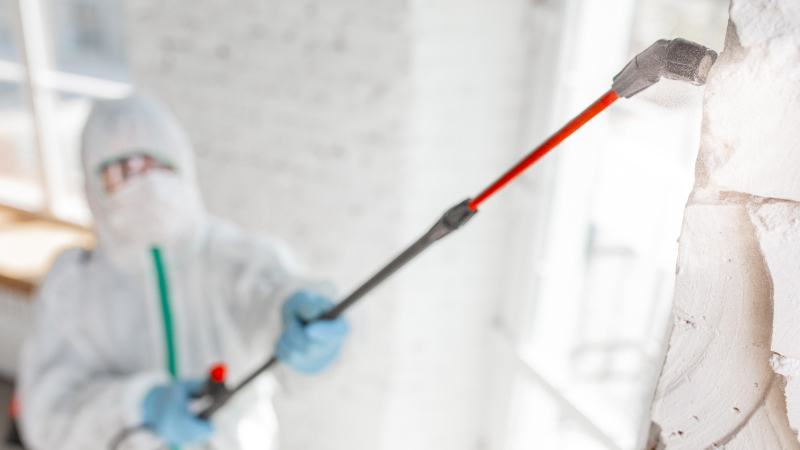Finding mold in your home can be frightening. However, molds are unbelievably common and in small quantities are harmless to most people. Of all the thousands of types of molds, black mold has gotten most of the media attention, even though current research holds that it is not necessarily more toxic than other molds. All the same, it has earned the nickname “toxic mold” because it can release chemical spores, called mycotoxins, that can cause severe illness. Here’s what to know about black mold, and why you should contact a professional mold removal company if you find mold growing in your home.
What Does Black Mold Look Like?
Black mold (Stachybotrys Chartarum) grows primarily on cotton, paper, wood, and other materials that have a high cellulose content. So, mold on your ceramic or vinyl shower tile is unlikely to be black mold. But it may grow on the ceiling of your bathroom. It requires darkness and moisture to grow, so crawlspaces and basements that have leaks are common sites. The mold may also grow on the wood near windows.
When this mold first begins to grow, it is typically white or grey and fuzzy. As it matures it may appear wet or slimy. It may also appear powdery, which is a sign that it is forming spores that can make you sick. It often grows and spreads in patches of irregular circles.
Preventing Toxic Mold in Your Home
Unfortunately, there is no way to prevent mold from getting into your home. Spores can fly in through open windows or doors. The spores may also be brought into your home on your clothing. But you can take steps to reduce the likelihood that the mold will be able to grow and spread.
- Fix all leaks (roof, walls, pipes, foundation) immediately
- Make sure caulking around windows, bathtubs, and showers is in good condition
- Hire a professional emergency restoration company if you experience water damage
- Run a dehumidifier in your basement or other damp areas
- Replace carpeting or fabrics that were not dried immediately after getting wet
- Keep dryer vent and HVAC ducts clean and clear
What Illnesses Are Linked to Indoor Mold Exposure?
Mold exposure is particularly problematic for those who are allergic to mold, and those who have asthma, compromised immune systems, and preexisting lung conditions.
Symptoms of a reaction to mold exposure often initially include a runny nose, watery eyes, skin rashes, sinus infections, wheezing, burning eyes, sore throat, and dry cough.
Other people have been diagnosed with the umbrella term “sick building syndrome” after mold exposure. Sick building syndrome refers to a variety of nonspecific illnesses, that may include symptoms such as headaches, body aches, nosebleeds, memory loss, and mood swings.
Immunocompromised individuals may also develop serious and hard-to-treat fungal infections. Those who have respiratory conditions may suffer from symptoms for years after being exposed to toxic mold. There are also reports of mold causing pulmonary hemorrhaging.
The gravest illness that can result from the inhalation of mycotoxins from mold is a condition called mycotoxicosis, which is mold poisoning.
If you are experiencing any symptoms of mold sickness, see a physician as soon as possible.
Have You Found Mold in Your Home? Call a Professional for Safe Removal
Per the Centers for Disease Control, “If you can see or smell mold, a health risk may be present.” To avoid putting your health at risk, contact ProKleen for the safe removal of mold in your home. Call 541-857-1818 or send us a message.

